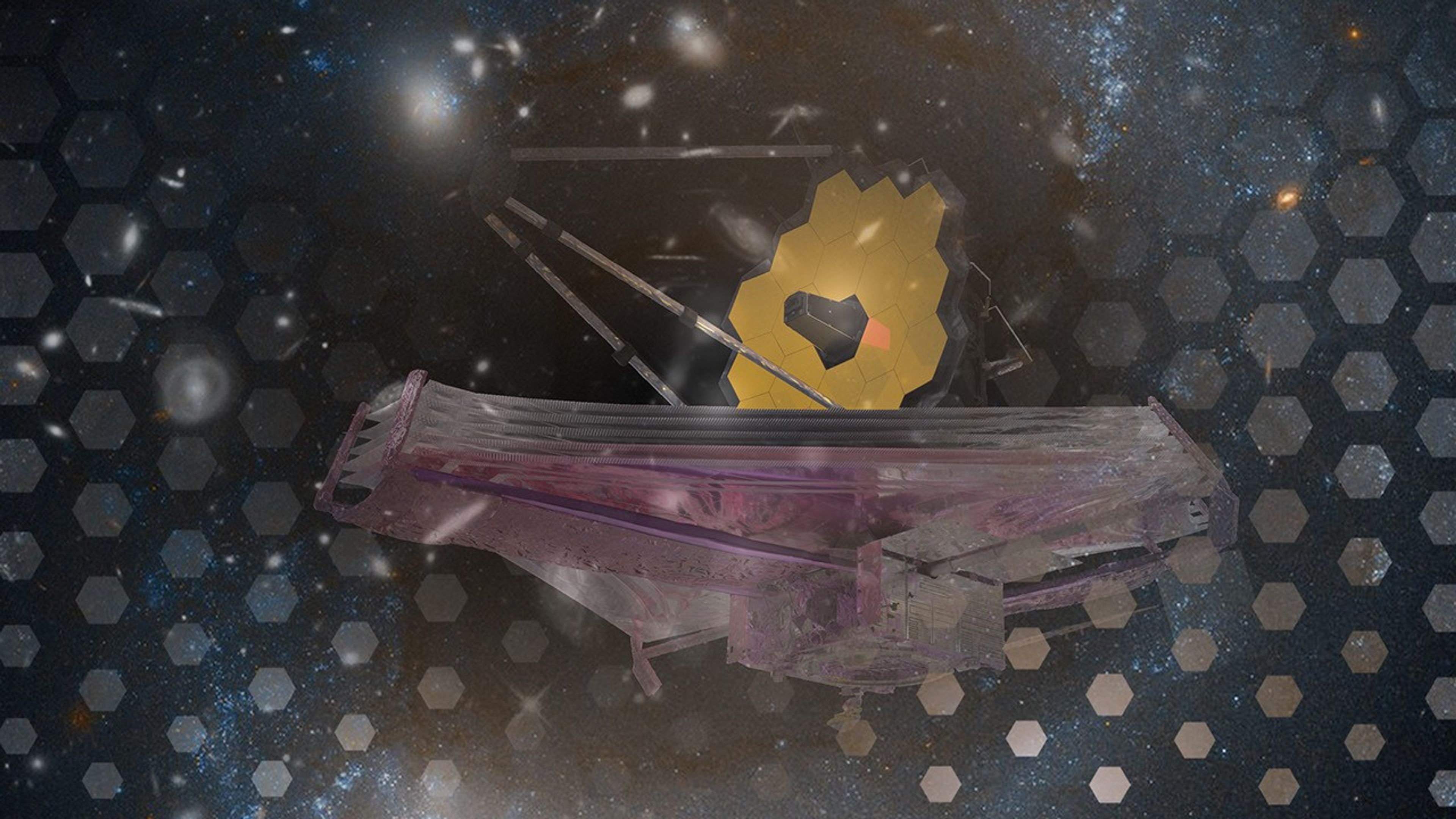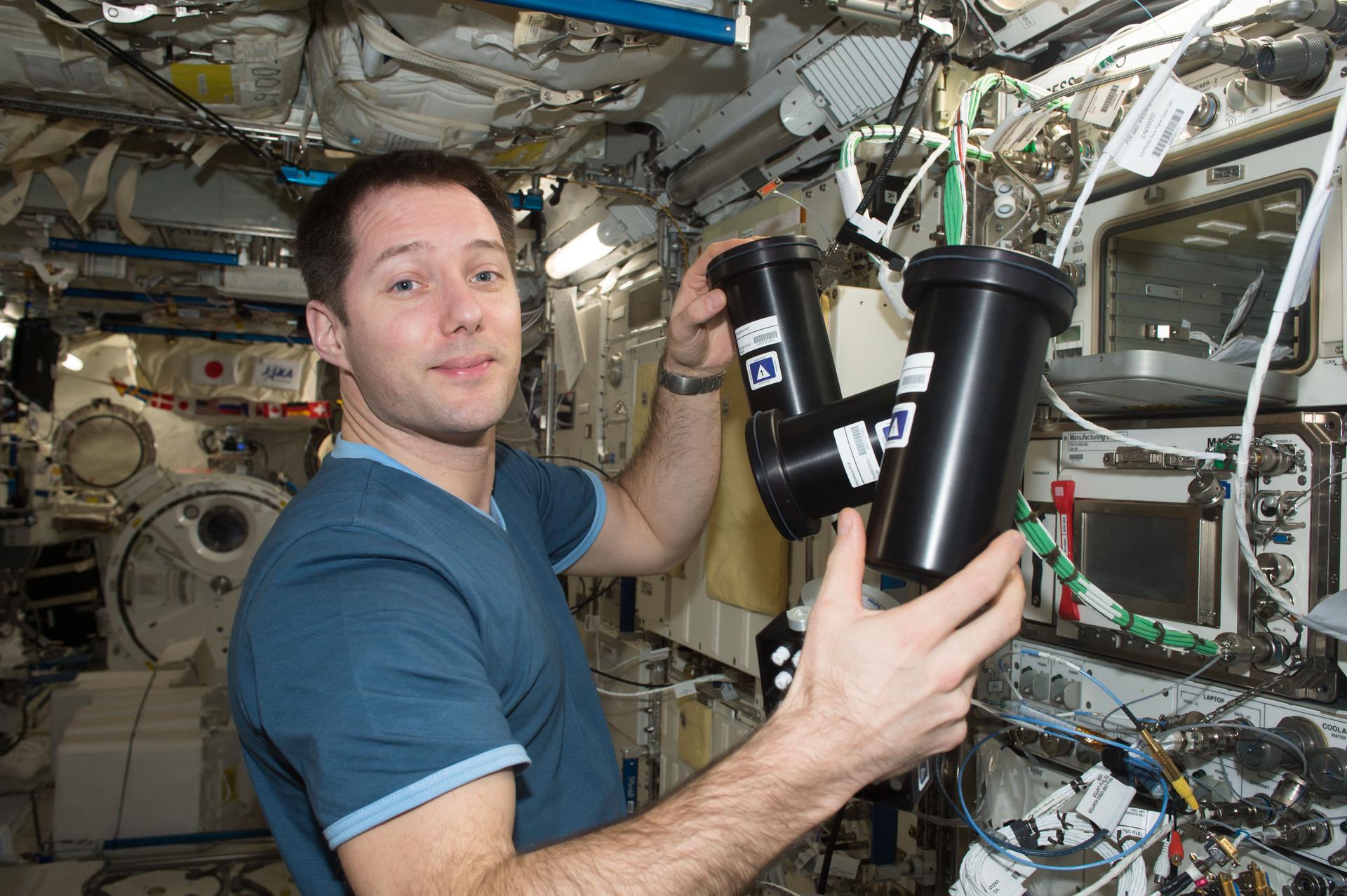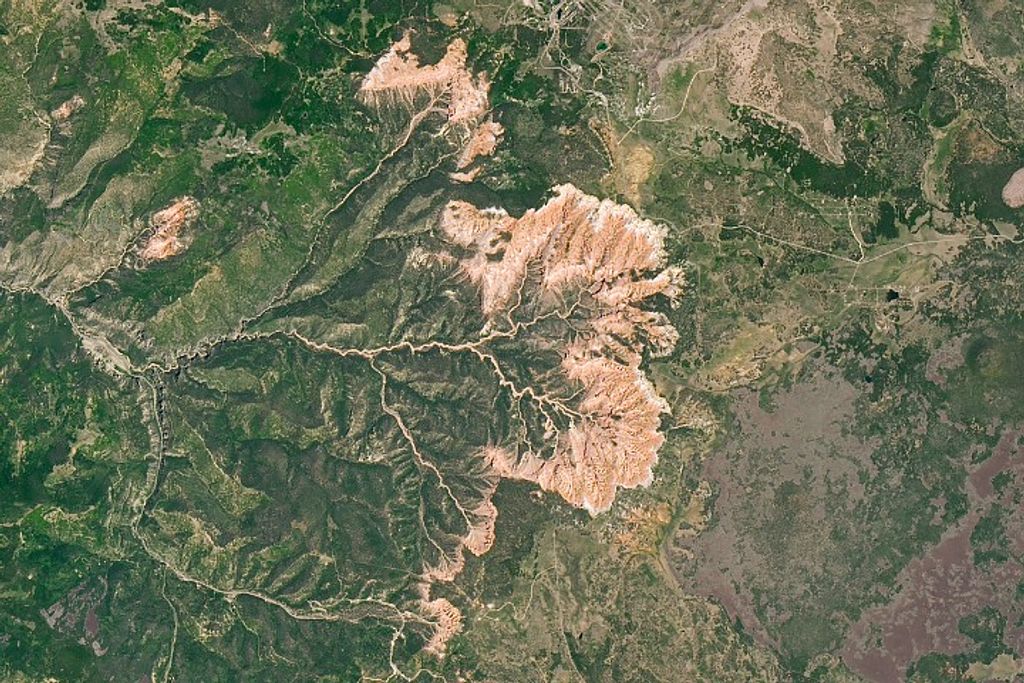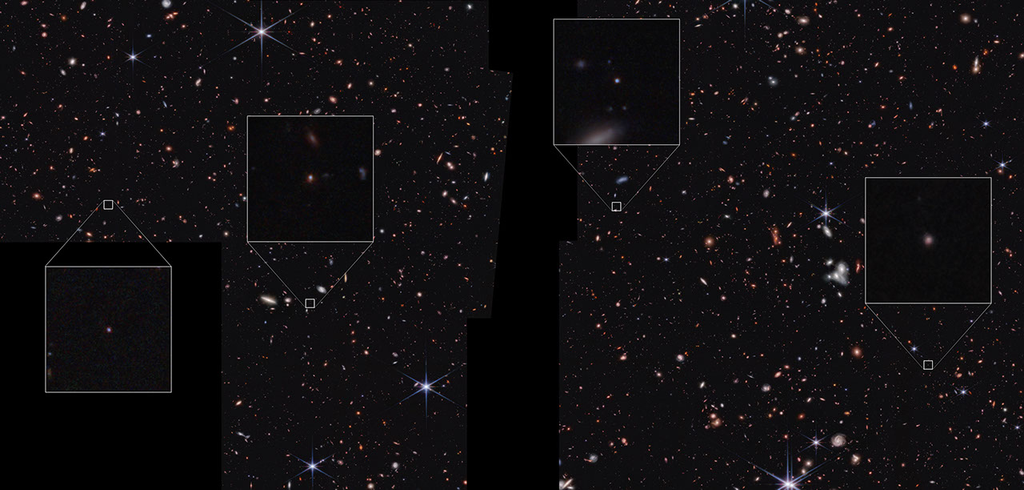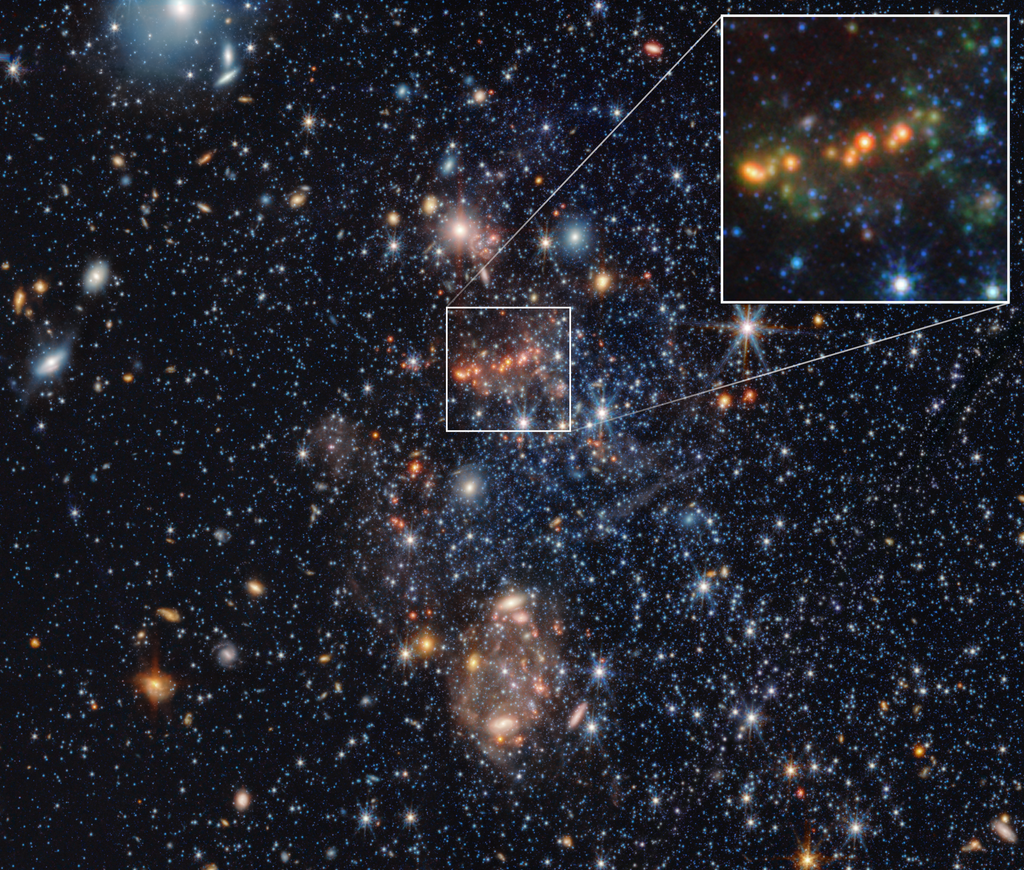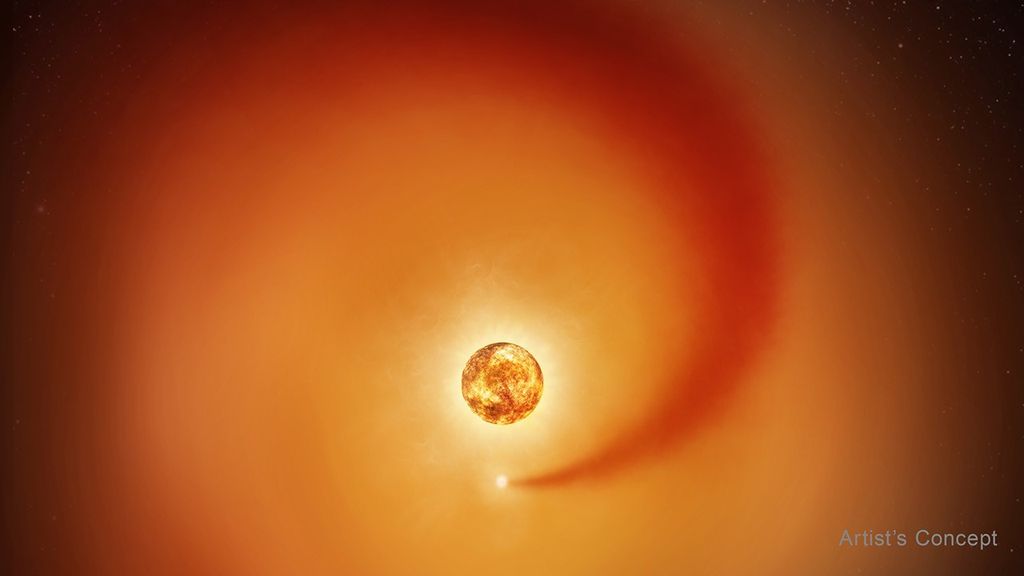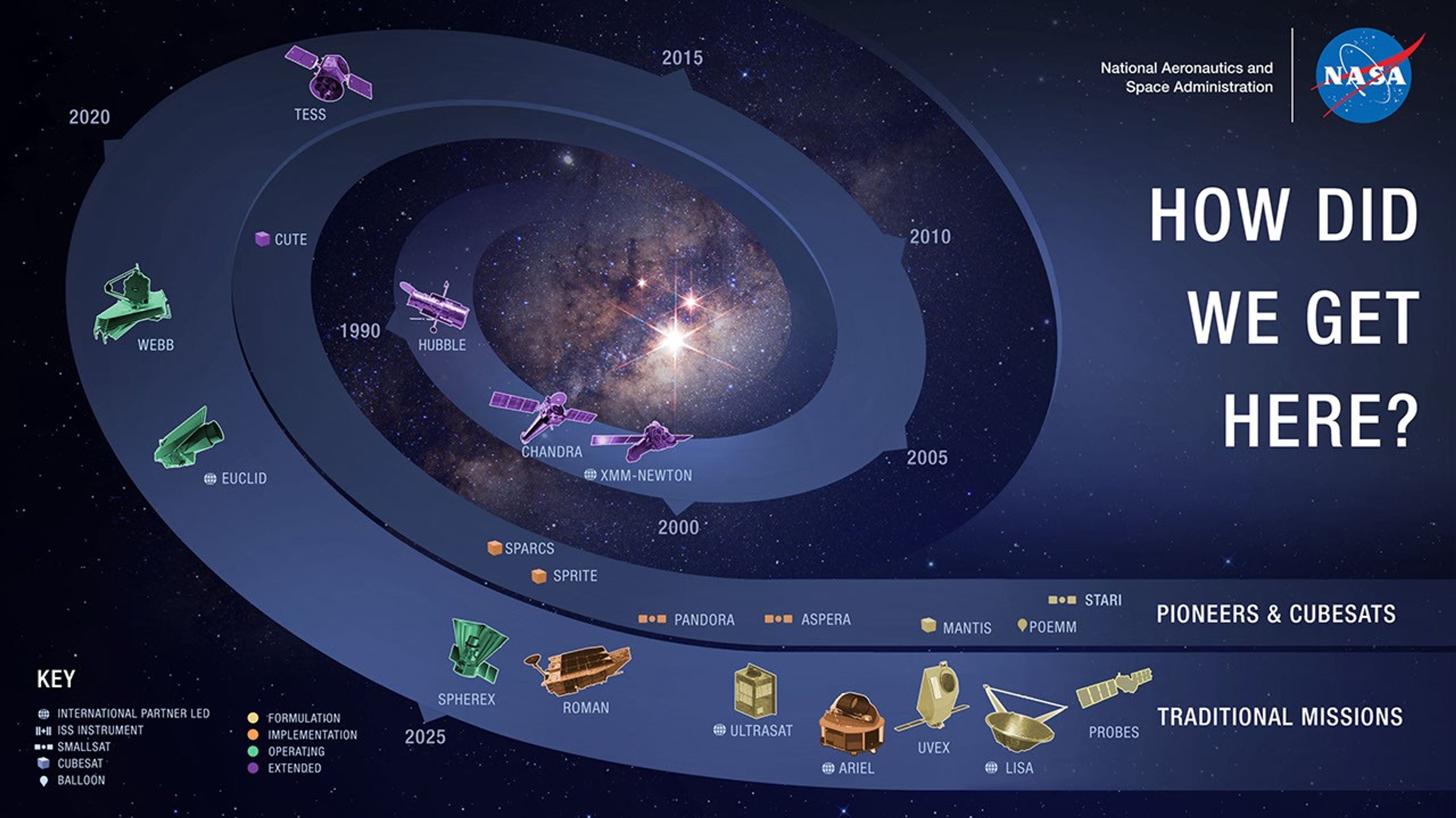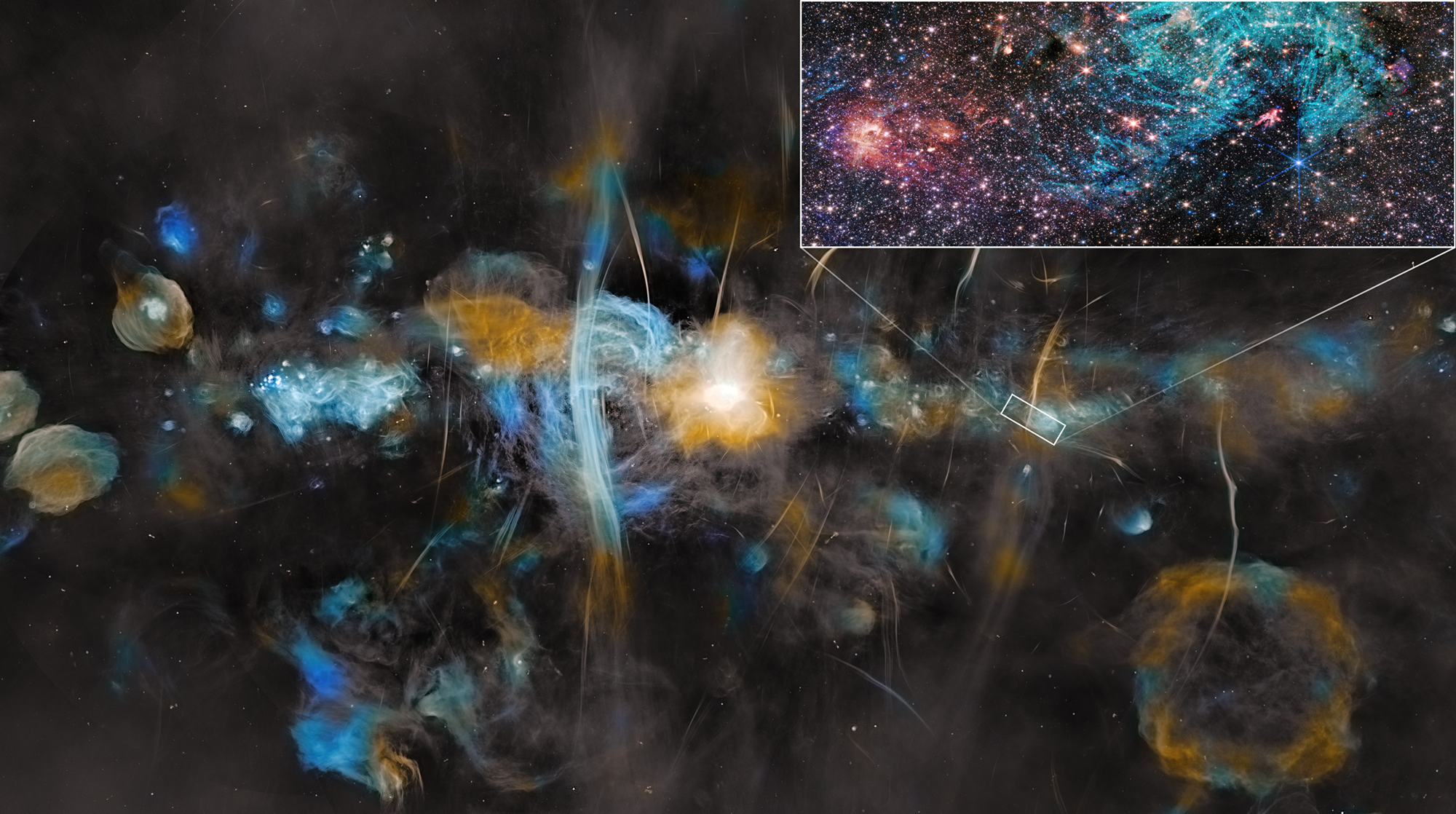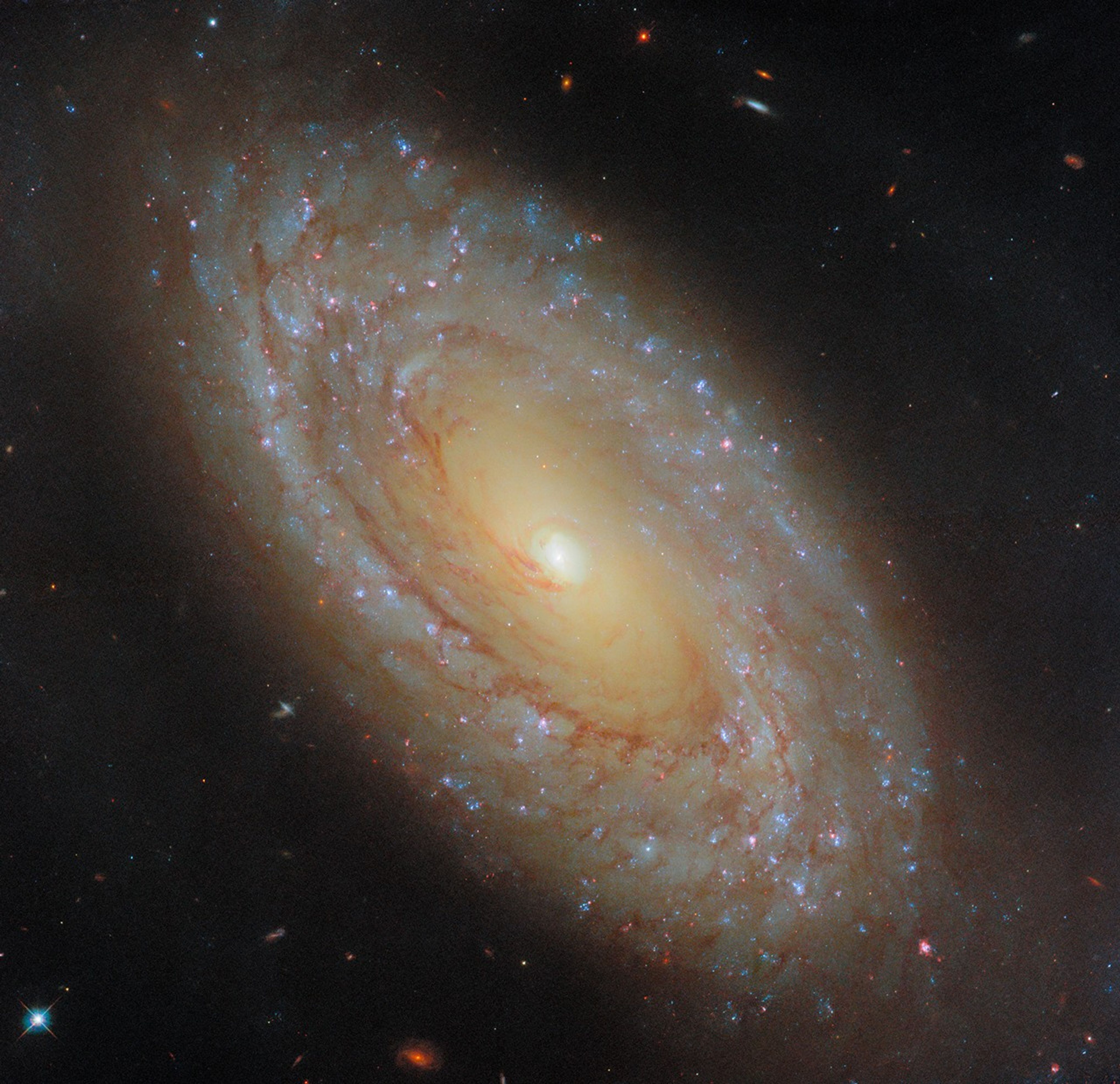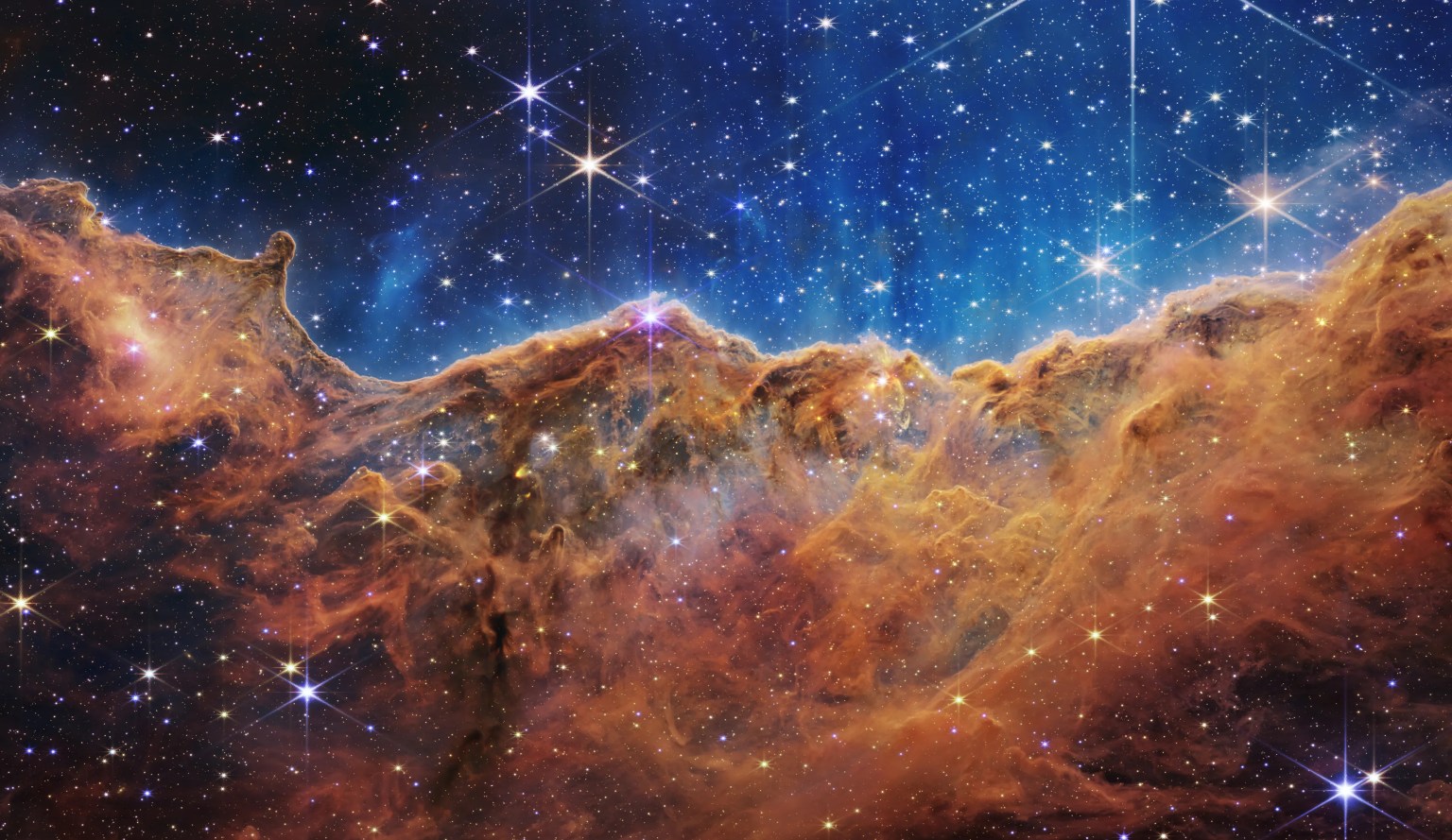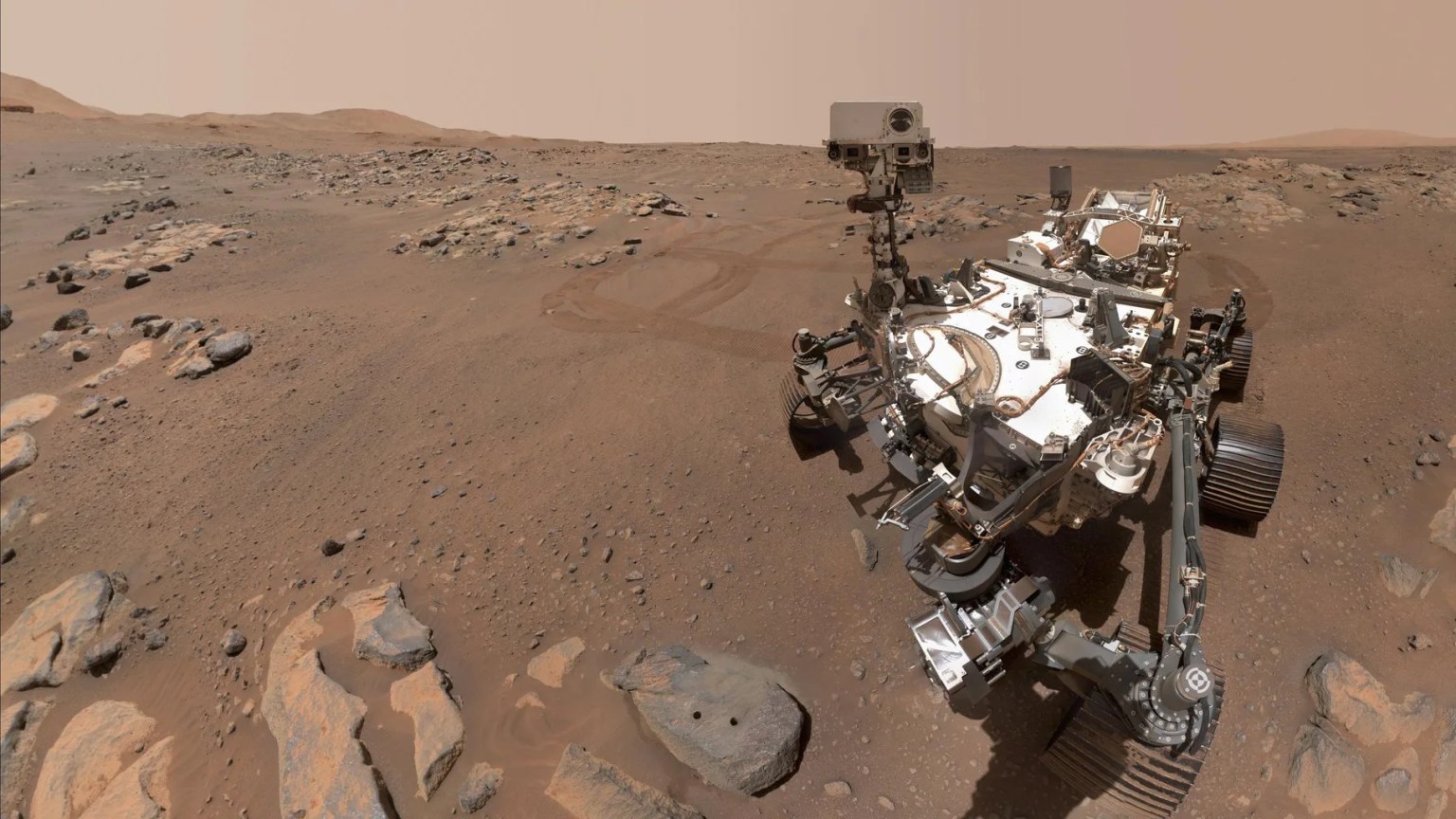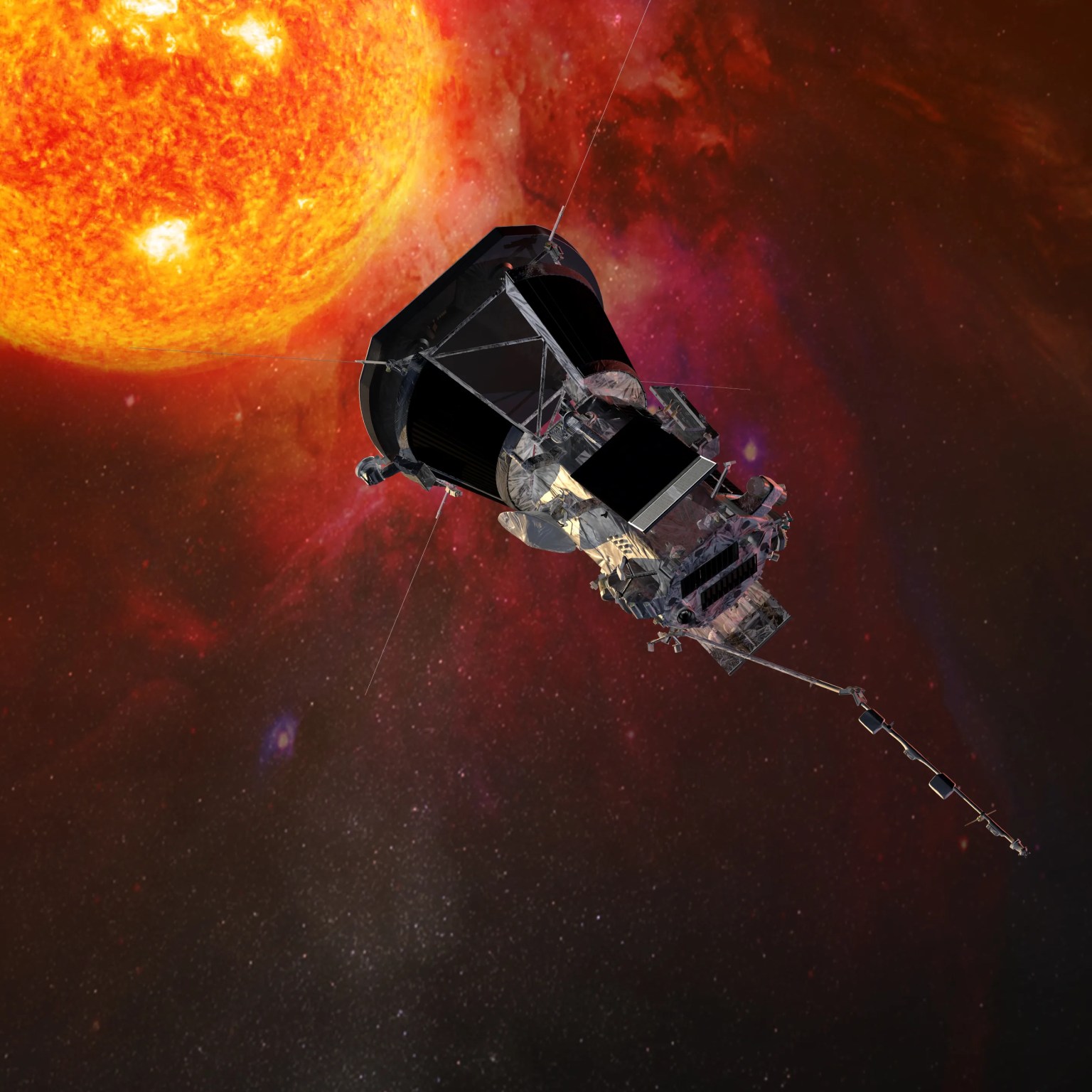How did we get here?
Tracing the Origins of Stars, Galaxies, and Life
The story of how we came to exist begins in the first moments after the Big Bang. Over 13.5 billion years, stars, galaxies, and planets formed and evolved—building the complex universe we see today. NASA’s Astrophysics missions are uncovering this history by studying how the earliest light emerged from darkness, how galaxies assembled over time, and how the elements essential to life were forged in the hearts of stars.
Using current missions like the James Webb Space Telescope (JWST) and the Spectro-Photometer for the History of the Universe, Epoch of Reionization, and Ices Explorer (SPHEREx), researchers can look all the way back to the universe’s first billion years with unprecedented clarity. These missions act as powerful time machines, revealing the birth of the first stars and galaxies and showing how their evolution over time shaped the conditions that eventually led to life. Together with the current and future missions like the ESA’ Euclid and the Nancy Grace Roman Space Telescope, these missions will deepen our understanding of how structure and complexity emerged across the universe.
Complementing these efforts, strategic missions such as the Hubble Space Telescope and the Chandra X-ray Observatory, and smaller missions such as the Fermi Gamma-Ray Space Telescope, Neil Gehrels Swift Observatory, NuSTAR, IXPE, NICER, ESA’s XMM-Newton and JAXA’s XRISM continue to unravel the phenomena of the universe and reveal the physical processes that connect the earliest galaxies to our own Milky Way—linking the distant past to the universe we see today.
Together, NASA’s Astrophysics missions are helping humanity understand not only where we came from, but how the universe continues to evolve—revealing the grand narrative of creation written across the stars.
NASA’s Webb Sees Galaxy Mysteriously Clearing Fog of Early Universe
Using the unique infrared sensitivity of NASA’s James Webb Space Telescope, researchers can examine ancient galaxies to probe secrets of…
Read the Story
James Webb Space Telescope
Webb is the premier observatory of the next decade, serving thousands of astronomers worldwide. It studies every phase in the history of our Universe.
Learn More